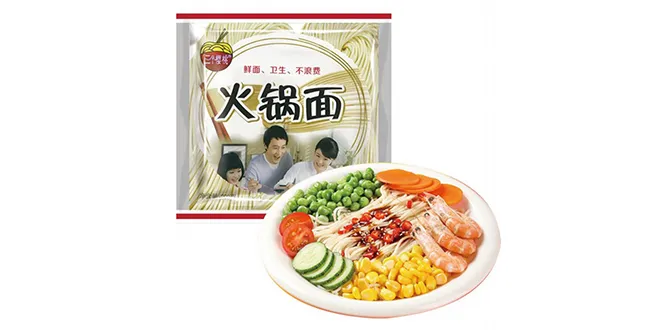ramen egg noodles
The Delightful Harmony of Ramen, Eggs, and Noodles
Ramen, a dish that has transcended borders and gained global popularity, embodies the essence of comfort food. Its versatility allows for countless variations, but one of the most beloved additions to a steaming bowl of ramen is the luscious ramen egg, or ajitsuke tamago. This delightful combination of ramen and eggs not only enhances the flavor profile of the dish, but also enriches the overall dining experience.
The Origins of Ramen
Ramen has its roots in Chinese wheat noodles, but it has evolved into a distinctly Japanese culinary tradition. Born in the streets of Yokohama in the late 19th century, ramen has captured hearts and tastebuds with its rich broths, various noodle types, and an array of toppings. The dish typically consists of four key components the broth, noodles, tare (seasoning), and an assortment of garnishes. Each region in Japan has its own variation, showcasing local ingredients and flavors, which has contributed to ramen’s reputation as one of the most intricate and cherished dishes in Japanese cuisine.
The Perfect Ramen Egg
One of the reasons ramen is often considered a bowl of sheer happiness is the addition of the ramen egg. Soft-boiled to perfection, the ramen egg features a runny yolk enveloped in a silky, slightly sweet marinade. This marination is achieved by soaking the eggs in a mixture of soy sauce, mirin, and sometimes sake, which gives them a delightful flavor that complements the savory broth. When sliced in half, the egg reveals its golden yolk, creating a beautiful visual that enhances the dish and making each bite a joyous experience.
Cooking the Ramen and Eggs
Creating the perfect bowl of ramen starts with the noodles. Fresh ramen noodles are ideal, but dried noodles can achieve similar results with the right preparation. Boiling the noodles until they reach the perfect al dente texture is crucial, as overcooked noodles will become mushy and lose their charm.
ramen egg noodles

While the noodles are cooking, one should prepare the broth. A rich tonkotsu (pork bone) broth, a hearty miso broth, or a lighter shoyu (soy sauce) broth can each serve as excellent bases for ramen. The flavor of the broth is further enhanced by simmering it with fats, such as pork belly or chicken, along with aromatics like garlic, ginger, and green onions.
Simultaneously, the eggs should simmer in boiling water for about six to seven minutes to achieve that perfect gooey yolk. They are then transferred to an ice bath before being peeled and soaked in the marinade.
Building the Perfect Bowl
Once the broth and noodles are ready, it is time to assemble the bowl. The noodles serve as the foundation, topped with a generous ladle of piping hot broth. The marinated ramen eggs are sliced in half and placed delicately on top, adding a luxurious touch. Other garnishes like sliced green onions, nori (seaweed), bamboo shoots, and menma (fermented bamboo) can be added for texture and flavor, creating a harmony that makes every spoonful satisfying.
The Cultural Impact of Ramen
Over the years, ramen has evolved into a cultural phenomenon. From cozy hole-in-the-wall shops to high-end ramen bars, the dish has garnered a dedicated following around the world. It has inspired festivals, culinary competitions, and even instant noodle variations that allow people to recreate the ramen experience at home. Moreover, ramen shops have become a culinary canvas for chefs to experiment, introducing elements from other cuisines and presenting unique takes on this beloved dish.
Conclusion
In essence, the interplay of ramen noodles and soft-boiled ramen eggs encapsulates not just a dish, but a rich cultural heritage steeped in tradition. It represents comfort, creativity, and the delightful simplicity of savoring a bowl of goodness. Whether indulging in a bowl at a local ramen shop or making it at home, the combination of ramen, eggs, and noodles continues to bring joy to countless food lovers. Each slurp is a reminder of the warmth and connection that food can foster, making ramen a timeless favorite for generations to come.
-
Unleash Your Inner Chef with Delectable Italian Pasta CreationsNewsAug.01,2025
-
Savor Health and Flavor: Irresistible Soba Noodles for Sale Await!NewsAug.01,2025
-
Nourish Your Body with Premium Organic Ramen - A Culinary Delight AwaitsNewsAug.01,2025
-
Elevate Your Dishes with Our Exquisite Kinds of Egg NoodlesNewsAug.01,2025
-
Dive into Flavorful Convenience with Our Ramen OfferingsNewsAug.01,2025
-
Discover Exquisite Types of Naengmyeon and Chilled Soba NoodlesNewsAug.01,2025
-
Is Whole Wheat Pasta Healthy?NewsMay.30,2025
Browse qua the following product new the we

















































































































